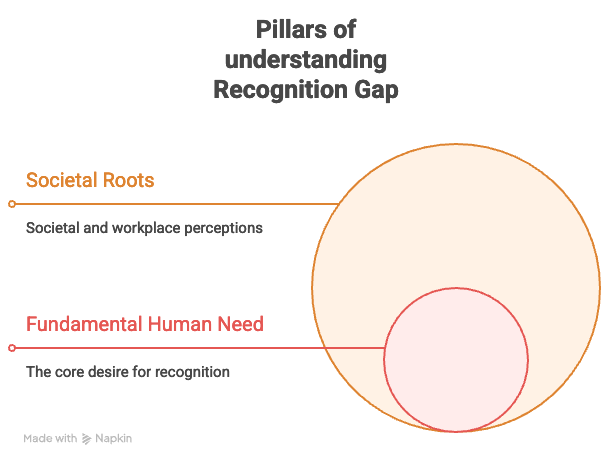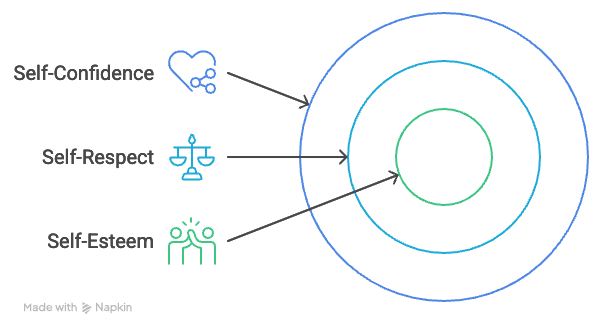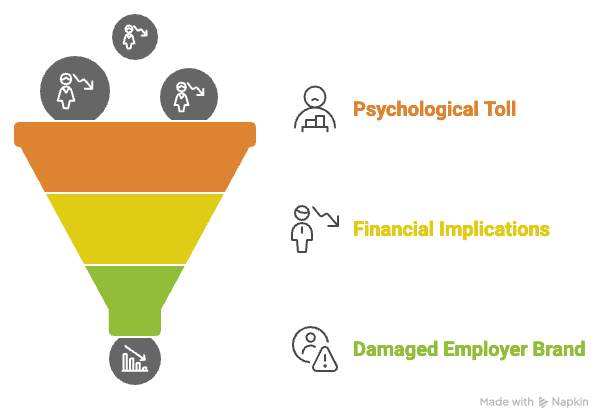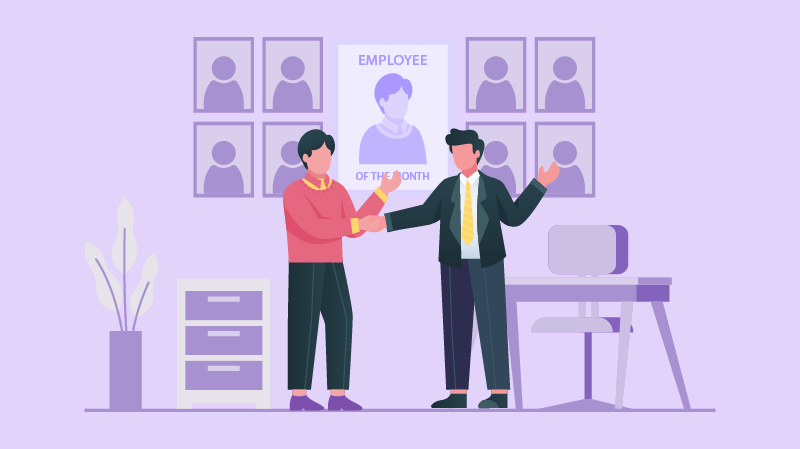The Recognition Gap: Why Valuing Employees is a Vital Business Strategy

A Global Employee Recognition and Wellness Platform
I will never forget the day when a high-performing colleague handed in her resignation papers, not for a pay or a workload issue, but because she felt utterly invisible.
Her case was far from unique. In my work with leaders and teams, I’ve observed talented people disengage when their efforts go unappreciated.
This disconnect, known as the recognition gap, bears real implications for employees’ morale, mental health, and business outcomes.
If you’re seeing drops in engagement or spikes in turnover, it’s time to examine your recognition practices.
This disconnect—the recognition gap—has real consequences for morale, mental health, and business results. If you’re seeing drops in engagement or spikes in turnover, it’s time to examine your recognition practices. The recognition gap isn’t just an HR issue; it’s a critical business challenge.
The recognition gap is not just an HR issue but a critical business challenge that requires your full attention.
Join me on this blog as we explore this gap, its causes, its impact, and how to close it.
This discussion will highlight the true significance of recognition and its potential to bridge the gap, making your employees feel seen, valued, and motivated to contribute their best.
What is a Recognition Gap?
The Recognition Gap is a crucial and damaging discrepancy between the volume and quality of work employees contribute and the acknowledgment they receive.
In a nutshell, the efforts put in by employees often go unnoticed and unappreciated in the way they deserve.
Having a fair share of experience talking to leaders regularly, I’ve witnessed how this gap can undermine teams and organizations.
As we delve further, we must understand the two pillars that are central to our discussion.
First is societal roots. The occurrence of recognition gaps is no accident; they are generally rooted in how our society and workplaces perceive and value employee contributions.
The second is a fundamental human need. Recognition, at its heart, is deeply human. It’s our deepest desire to feel seen, valued, and respected for what we do.
In the following sections, we will be taking a deep dive into these two pillars. Understanding them is the primary step to understanding the issue and a step to closing the gap for building a culture where employees feel genuinely valued.

The Societal Roots of Workplace Misrecognition
-
Michèle Lamont’s concept:
Sociologist Michèle Lamont introduced the concept of the “recognition gap,” defining it as “disparities in worth and cultural membership between groups in a society”.
Elaborating this further, not everyone is subjected to the same respect, dignity, or sense of belonging; some groups are stigmatized in a way that they are perceived as less valuable or less deserving of acknowledgment.
Lamont’s work primarily examines how these gaps are heavily reinforced by societal structures, cultural narratives, and even policy frameworks.
-
Connecting Societal Issues to the Workplace:
The recognition gap is not limited to a social problem; it is also a harsh reality in the workplace. The same biases that dictate who is valued in society often infiltrate organizations as well.
When societal beliefs about who is “worthy” or “deserving” influence workplace recognition, it creates a cycle that consistently overlooks and undervalues some employees.
This further goes on to unleash a series of adverse outcomes such as low motivation, disengagement, and increased turnover, particularly among those who feel marginalized and invisible.
Research indicates that 66% of employees would quit their jobs if they felt unappreciated.
In this case, organizations with recognition gaps are on the radar, where they are likely to struggle retaining top talent.
-
Concluding Thought: Recognition as a Tool for Change
Workplace recognition is no longer just limited to boosting morale; it has become a powerful tool for social justice.
By proactively valuing and acknowledging every employee for their efforts and accomplishments, organizations can bridge recognition gaps within their walls.
In her book, Seeing Other: How Recognition Works—And How It Can Heal a Divided World, Lamont defines recognition as “'seeing others’ and acknowledging people's existence and positive worth, actively making them visible and valued, reducing their marginalization, and openly integrating them into a group.”
This definition reflects the higher purpose of recognition, which is to unite people who are otherwise divided and marginalized.
Additionally, recognition shapes an inclusive and fair workplace that drives business success by unlocking higher productivity, engagement, and loyalty.
In essence, closing the recognition gap is a moral imperative and an innovative business strategy.
The Human Need for Recognition: A Philosophical Perspective
After understanding the societal roots, I want to dive deeper into how recognition is cemented in human psychology.
As leaders, you need to understand the philosophical foundation to perceive employee recognition for what it truly is, that is, a fundamental business strategy rooted in deep human needs.
Introducing Philosophical Frameworks
For centuries, philosophers have been grappling with recognition, and surprisingly, their insights show relevance to modern workplaces.
Let’s discuss the three thinkers whose work changed how we understand human motivation.
- Georg Wilhelm Friedrich Hegel
Hegel realized and argued that self-consciousness never occurs in isolation but emerges through what he termed "mutual recognition.” It means that we can discover who we are through how others perceive and acknowledge us.
This is not simply about feeling good when someone compliments us, but it is significantly about the crucial process of becoming aware of ourselves as conscious beings.
- Axel Honneth
Building on Hegel's foundation, contemporary philosopher Axel Honneth developed what he called the "struggle for recognition" framework. Interestingly, it has become one of the most influential theories in modern social philosophy.
Honneth's work is specifically relevant for workplace leaders because it outlines precisely where and how recognition needs to occur for human flourishing.
- Charles Taylor
One of the most influential political philosophers of our time, Charles Taylor, took the argument for recognition a step ahead by positioning it not only as a courtesy but as a fundamental human need.
Taylor's most influential statement is: "Due recognition is not just a courtesy we owe people. It is a vital human need.” He argues that recognition is as essential to human well-being as physical needs.
Explaining Honneth's Three Spheres

This is the stage where it gets practical for leaders.
Alex Honneth, briefly discussed above, has identified three distinct spheres where recognition becomes a need. Each one directly applies to your workplace.
- Love (Personal Relationships) → Self-Confidence
What this means: This sphere is about feeling trusted, cared for, and valued as a person and not just as an employee.
Workplace Scenario: Do your employees feel psychologically safe? Can they demonstrate vulnerability about challenges they face without fear? Do managers genuinely care for their people as individuals?
Why it matters: Without a solid foundation of trust and care, you cannot expect employees to develop the self-confidence required to take risks, innovate, or share ideas.
The business impact: When a sense of psychological safety prevails, teams no longer feel intimidated sharing their thoughts and engaging in innovative thinking and creative problem-solving.
As McKinsey explains, “Psychological safety is consistently one of the strongest predictors of team performance, productivity, quality, safety, creativity, and innovation.”
- Rights (Legal & Political) → Self-Respect
What this means: This is about being treated with dignity, ensuring fairness, and respecting your autonomy.
Workplace Scenario: Do your policies ensure equality? Do promotion processes feel fair? Are all voices heard in decision-making, regardless of background or position?
Why it matters: Employees have an innate need to feel treated as equals, where their rights and dignity are protected.
The business impact: When employees trust that systems are fair, they're significantly more inclined to go above and beyond their basic job requirements.
A study found that people working in high-trust companies were 76% more engaged at work and 50% more productive.
- Solidarity (Community & Workplace) → Self-Esteem
What this means: This sphere is about feeling valued for your unique contributions to the team and organization.
Workplace Scenario: Do employees have an understanding of how their work contributes to something meaningful? Are different skills and perspectives celebrated?
Why it matters: Self-esteem develops from knowing what makes you unique and valuable to the team.
The business impact: Employees with strong self-esteem are inclined to be more engaged, are likely to stay, and are more willing to take on challenging projects.
Introducing Taylor's Perspective
Moving ahead with Charles Taylor’s work, here’s what every leader must understand. Taylor viewed that our identity, who we think we are, is fundamentally shaped by recognition or its absence.
As mentioned earlier, he gave a key warning to leaders, saying that, "Due recognition is not just a courtesy... It is a vital human need.”
However, here comes a part that should make every leader pause and reflect. Taylor also warned that misrecognition could be a form of oppression.
When you fail to recognize employees properly, or worse, misrecognize them, you do not simply hurt their feelings. In fact, you are pushing to trap them in "a false, distorted, and reduced mode of being.”
Let us understand what this means in the workplace context:
-
Recognition shapes identity: How you recognize your employees or your failure to recognize them can directly influence how they perceive themselves and their capabilities.
-
Misrecognition causes real harm: You must understand that consistently overlooking someone's contributions not only demotivates them but can go to the extent of damaging their sense of self-worth and professional identity.
-
It's about dignity: Keep in mind that recognition is fundamentally about treating people with the dignity they deserve as human beings and not just as mere workers.
These philosophical insights are not just academic theory; they are the cornerstone for understanding the powerful role of employee recognition in business settings.
The Tangible Costs of Invisibility: Recognition Gaps Across Demographics
Having explored the philosophical perspective above, you are now ready to delve into the intricacies of recognition gaps.
I would like to draw your attention to the fact that the recognition gap is not an abstract concept that affects everyone equally.
The truth is that this gap varies across demographics, and the consequences it bears are both measurable and costly.
So, let’s get into the discussion!
The Discrepancy Between Contribution and Appreciation
The discrepancy between what employees contribute and the appreciation they receive in return is widening and getting worse.
These employees, often termed “shadow contributors,” are not underperformers. They are team members who deliver their best, but their contributions usually remain invisible, which brings down engagement levels.
This gap, which is a measurable one, creates a disproportionate impact on specific groups. The demographic division highlights systemic issues in the distribution of recognition.
As leaders, you need to step in to understand these patterns for the sake of equity and to drive business success.
Therefore, recognizing and addressing these demographic divides is key to creating a fair and high-performing workplace.
This is what Gallup has to say on unequal recognition: “If recognition even seems inequitable, it creates an inclusion problem, undermines the employee experience, and sends mixed messages about what excellence looks like.”
The Gender Chasm: How "Invisible Labor" Widens the Gap
When the gender perspective comes into play, things become more complex.
The recognition gap tends to affect women disproportionately, and it’s tied to what researchers call "invisible labor" or "office housework".
Let’s explore the details:
-
Research found that 30% of women feel underappreciated at work compared to just 20% of men.
-
A research paper from MIT Sloan reveals that women receive higher performance ratings than men but get 8.3% lower ratings for "potential.” This result translates to women being 14% less likely to be promoted than their male colleagues.
Research demonstrates that women feel more underappreciated and irrespective of outperforming their male counterparts, they are still being overlooked for advancement.
As a result, the career impact for women is devastating.
Defining and Understanding "Invisible Labor"
So, what is this invisible labor that has been wreaking havoc on careers? Basically, these are activities that are conducted without additional compensation or formal recognition.
They include organizing team events, taking meeting notes, mentoring new hires, remembering birthdays, managing workplace conflicts, and handling diversity initiatives.
It creates an "unacknowledged second shift,” where women handle critical relationships and all culture-oriented work that benefits the organization but is not reflected in performance reviews.
A key finding in the McKinsey Women in the Workplace report is that companies do not formally recognize this work in performance evaluations since they become a part of invisible labor.
This further converts cultural misrecognition into economic disadvantage. As a result, talented women get trapped in career-limiting cycles.
The Generational Divide: Recognizing Millennials and Gen Z
It is no secret that millennials and Gen Z have dominated the workplace scenario.
Having said that, their expectations for recognition have been significantly shaped by technology and a desire for purpose-driven work.
So, if you feel that you are missing out on addressing the generational divide and crafting recognition strategies for them, then it’s high time you understand their preferences and cater to the generations separately.
Recognizing Millennials (Born 1981-1996)
Millennials currently comprise the largest employee demographic, taking their steps into leadership roles. Hence, understanding what truly motivates them is not optional but essential for retention.
Key Motivators:
- Purpose-driven work: They are more purpose-driven and want to know that their contributions matter beyond profit margins.
- Clear career progression: They desire to take a path forward and understand how recognition ties to advancement.
- Collaborative environments: They thrive on peer acknowledgment
and team-based recognition.
Preferred Recognition Approach:
-
Frequent and meaningful feedback: Annual reviews have taken a step back for them. They want regular feedback that acknowledges both achievements and areas for growth.
-
Flexible rewards: They resonate with extra PTO, professional development opportunities, and experiences over traditional bonuses.
As per a study, 78% of Millennials prefer experiential rewards over material items, -
A mix of public and private acknowledgment: They appreciate and are open to both team-wide recognition and personal conversations with their managers.
Recognizing Gen Z (Born 1997-2012)
With the rapid entry of Gen Z into your workforce, you must be aware that their recognition preferences differ from those of previous generations. Ignoring these differences can cost you talent.
Hence, understanding their motivation and recognition preferences is a pressing need.
Research shows that 94% of Gen Z workers desire frequent feedback and recognition.
Key Motivators:
- Authenticity: They have the knack to spot insincerity instantly and value genuine, personalized recognition.
- Value alignment: They seek to work for organizations whose diversity, equity, and inclusion efforts are real and not performative.
- Social impact: They want to witness how their work contributes to the broader societal good.
Preferred Recognition Style:
- They prefer immediate, specific, and frequent recognition.
- A GenHQ study found that over 60% of Gen Z employees want multiple check-ins from their managers during the week.
- They value the recognition that comes with opportunities, which enables them to acquire new skills and enhance their expertise.
Recommended Resource: Leadership and Recognition: Bridging Generational Gaps in the Workplace
The Impact of Ignoring Recognition Gap

As discussed in the previous section, we examined how the recognition gap affects various demographic groups.
Building on that, we must now understand what happens when you ignore the recognition gap both for your employees and your organization.
The longer you ignore it, the broader and more severe this gap will fester in your organization.
In addition, failing to recognize employees properly will not only hurt their feelings but also directly damage your business performance, employee well-being, and competitive position.
So, as we move ahead, let us abide by this guiding principle: A stitch in time saves nine.
The Psychological Toll of Misrecognition
You should be aware of what people undergo at your workplace when recognition gaps persist.
Chronic misrecognition is not only disappointing, but it is a significant workplace stressor that can have adverse psychological consequences on people.
The psychological impact of feeling undervalued and unrecognized has been measured and documented in the figures below.
- Increased Burnout: According to Gallup's report, 76% of employees experience burnout on the job at least sometimes, and 28% report being burned out "very often" or "always" at work.
Do not mistake burnout for mild fatigue. It is a clinical-level exhaustion that impacts every aspect of an employee's life.
- SHRM study reveals that 30 percent of workers say their jobs often make them feel stressed, 26 percent often feel overwhelmed, and 22 percent often feel anxious.
The numbers reveal the mental toll the employees undergo at the workplace.
The Financial Implications of a Recognition Culture
After exploring the psychological factor, let’s shift to discussing the financial implications that organizations go through when recognition is ignored.
The figures below will display the cost of sidelining recognition, which attracts massive financial hits.
1. Increased Employee Turnover
When you do not give your employees the due share of recognition and appreciation they deserve for their work, they are inclined to leave the organization. And the cost that companies bear to replace and hire employees takes a financial fit.
Gallup study reveals that the cost of replacing an individual employee can range from one-half to two times the employee's annual salary.
2. Decreased Productivity
- A Gallup study reveals that actively disengaged employees cost the world $8.8 trillion in lost productivity, equivalent to 9% of global GDP.
- According to a study, 69% of employees report they would work harder if they felt their efforts were better appreciated.
Damaged Employer Brand
- Non-recognition, misrecognition, or poor recognition practices create a vicious cycle for organizations that get trapped in increasing recruitment costs.
Research shows that a strong employer brand can reduce costs per hire by up to 50% and decrease employee turnover by 28%
- According to LinkedIn’s employer branding research,75% of job seekers evaluate an employer’s brand before deciding to apply by checking out the company’s website and social media.
Also, Candidates are three times more likely to trust what current employees say about an organization than the company itself.
When your recognition gaps create disengaged employees, they will be inclined to share negative experiences, which directly hinders your ability to attract top talent, costing your brand a significant loss.
Actionable Strategies to Remove the Recognition Gap
We have covered almost everything relevant and significant to the recognition gap. Now, it’s time to put powerful strategies into action that will help you close the recognition gap.
The process of bridging the gap involves a systematic and multi-faceted effort that covers aspects like technology, leadership, rewards, and culture. Let’s dig in!
1. Implement Systemic and Inclusive Recognition Programs
- To integrate recognition as part of your company culture, you must leverage social-recognition platforms. These platforms make recognition easy, swift, and timely, enabling employees to recognize one another.
Having said that, peer-to-peer recognition sets the stage for acknowledging or appreciating every effort and achievement without any hassle.
Research shows that for 28% of employees, feedback received from their peers has the most impact on their feelings of acknowledgment.

Source: Vantage Recognition and Rewards
- These platforms come with inbuilt analytics dashboards that allow you to keep track of how sound recognition is practiced among peers or managers.
You can track who gives and receives praise, identify “cold spots,” and correct gender, generational, or location bias before it festers in the organization.
- Ensure that equity is included in the algorithm. Regularly audit platform data to identify skewed patterns. Bias-detection practices ensure fair recognition.
2. Train and Empower Leadership
- Emphasize making recognition a core leadership skill. You can boost this process by providing formal training for managers and organizing practical workshops and seminars.
This hands-on experience will enable them to deliver meaningful recognition and feedback free from bias.
Also, the training should focus on personalized recognition that allows them to understand and tailor recognition to individual preferences and strengths.
-
Equip managers with the necessary tools, such as rewards and recognition platforms, which enable them to utilize the user-friendly interface for practicing regular recognition.
-
Familiarize managers with individual and team performance metrics, such as sales targets, project completion rates, or customer satisfaction scores, and link them to recognition.
This encourages employees to strive for and attain these metrics.
-
As emerging leaders, managers should also get a sound understanding of interpreting data analytics. This will help them analyze how recognition is impacting employee engagement, performance, and retention.
-
Senior leadership is the crux of empowering and boosting recognition efforts. Their importance lies in their ability to visibly champion and financially support recognition programs through their investments.
Their direct support can make recognition an organizational priority.
SHRM suggests that organizations allocate at least 1% of their total payroll toward employee recognition.
3. Offer Personalized and Flexible Recognition
-
Eliminate the consideration of a one-size-fits-all approach to recognition. Utilize brief surveys or platform preference settings to determine which rewards resonate most with Boomers, Millennials, and Gen Z.
-
Curate a “catalog” where employees can choose from:
– Spot awards or Monetary bonuses
– Public praise on company feeds or town halls
– Handwritten notes mailed to remote staff
– Extra paid time off or flexible scheduling passes
– Professional development funds or conference tickets
– Charitable micro-donations in the employee’s name
4. Foster Psychological Safety and Empower Employees
- SHRM study shows that about 90% of Fortune 500 firms support ERGs in the workplace.
ERGs play a pivotal role in highlighting overlooked or often unaddressed pain points.
As a result, they help advance diversity and inclusion, connect members with executive leadership, boost employee well-being, improve brand reputation, and enhance employees’ bond to the company’s mission, vision, and values.
Studies show that ERGs lead to a 56% increase in job performance and a 50% reduction in turnover.
In a nutshell, ensure that you support these groups in your workplace.
- Recognition can be truly practiced and can be more powerful when they feel safe to voice their thoughts. To achieve this, you need to foster a psychologically safe culture and environment.
A study says that when psychological safety is high, only 3% of employees are at risk of quitting.
When you witness that your employees feel safe to be authentic in their voice and approach, you can say that your recognition program has met a prerequisite for success.
- Recognition itself has the potential to reinforce safety.
The sense of acknowledgment and gratitude shifts their focus to efforts and wins that encourage idea-sharing and undertaking risks. This further fuels innovation.
Wrapping up
The discussion has been fruitful in drawing your attention to the recognition gap and its two underlying pillars.
It’s evident that the recognition gap is not just about workplace culture; it's about denying people something they need at the deepest psychological level.
And that's precisely why closing this gap is not just beneficial for employees but also essential for building resilient and high-performing organizations.
Having said that, the need of the hour is to use recognition as your shield, which can help you bridge the gap and unlock your team’s full potential.
FAQs
1. How can leaders identify if a recognition gap exists in their organization?
Leaders can look for signs such as:
- Declining engagement scores
- Increased turnover rates
- Feedback from exit interviews citing lack of appreciation
- Disparities in recognition data across departments or demographics
2. How often should employees be recognized?
Recognition should be timely and consistent. Many experts recommend acknowledging contributions as soon as possible—ideally weekly or at least monthly—to maximize its positive effects.


















